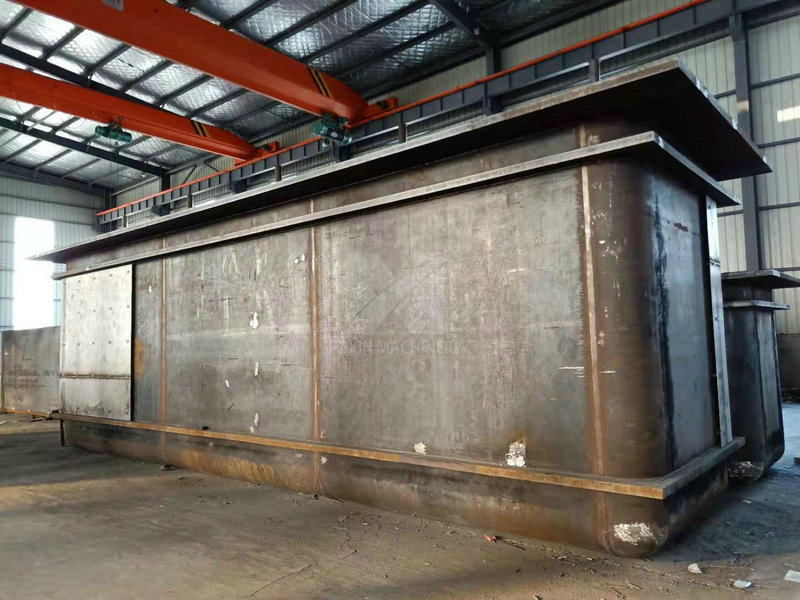
With the more extensive application of hot-dip galvanizing equipment, the hot-dip galvanizing industry has also developed more rapidly.
Zinc pots made of different steel plates have significant differences in use and performance, and also have a certain impact on the performance of galvanized products.
Qingdao Hexin Machinery Co., Ltd. believes that the selection of steel zinc pot steel plate mainly considers its good resistance to zinc liquid corrosion and certain mechanical strength. Because most of the alloy and impurity elements in the steel will increase the corrosion rate of the steel in the zinc bath, some stainless steels and heat-resistant steels with good chemical corrosion resistance and oxidation resistance are not as good as low silicon, low carbon, low aluminum, Low phosphorus structural steel. Considering the beneficial effects of carbon and manganese on the strength of steel, the content of carbon and manganese can be appropriately increased.
There shall be no cracks, cracks, bubbles, folds, inclusions, scabs and pressed iron oxide scales on the surface of the steel plate, and the steel plate shall not be delaminated.
The surface of the steel plate is not allowed to have a thin layer of oxide scale that hinders the inspection of surface defects, pitting, concave scratches and other local defects with a concave and convex degree greater than half of the thickness tolerance of the steel plate, and the minimum allowable thickness of the steel plate shall be guaranteed.
Local defects on the surface of the steel plate are allowed to be cleaned, and the cleaned place should be smooth without edges and corners, and the allowable minimum thickness of the steel plate should be guaranteed.
Severely corroded old steel plates shall not be used. If there are individual partial pits or bump damages, welding repairs are allowed, and they shall be ground flush with the surrounding base metal.
The special steel plate for zinc pot is aluminum killed steel hot-rolled steel plate. The composition segregation and local macro defects (porosity, slag inclusion, pores, folding, etc.) of the steel plate will cause harm to the use of the zinc pot. Therefore, in addition to the requirements for the chemical composition and mechanical properties of the steel plate, the smelting and rolling process must also be strict quality control requirements. Steel is smelted by converter or electric furnace and adopts out-of-furnace refining technology to control various impurities in steel to a low level. In rolling, a larger reduction is adopted to eliminate the central defect of the ingot and improve the mechanical properties and intrinsic quality of the steel.

